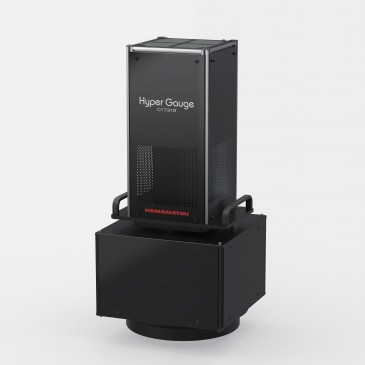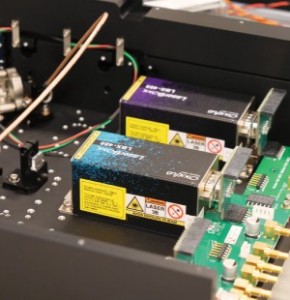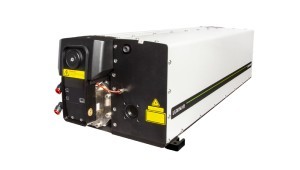In this article, Jose Pozo, EPIC’s CTO, talks to Michael Gutmann, co-founder and CEO of LIOP-TEC, a provider of innovative, high-performance solutions in the field of lasers and opto-mechanics.
Focus on time-resolved spectroscopy
In 1988, Michael graduated from University of Cologne (Germany) with a PhD in Chemistry. With his sights set on a career in academia, he then did a further two-year postdoc on time resolved laser spectroscopy at Caltech (US) under the supervision of Ahmed Zewail, a pioneer in the molecular approach to chemical reactions.
On returning to Germany in 1992, he began his Habilitation, a period of independent research, teaching, and administrative responsibilities required to teach in German universities. Accordingly, he set up his own research group on time resolved spectroscopy, and although it took longer than expected to build up the group, he successfully completed his Habilitation in Physical Chemistry in 2000.
While wating for a full professor position, he accepted some time-limited teaching contracts which if continued would have required moving around with his family. But after a while, rather than wait indefinitely for a full-time teaching post, he decided to opt for stability and made the difficult choice of abandoning academia by accepting a consultancy position with Dr. Kiesewetter Consulting in Cologne.
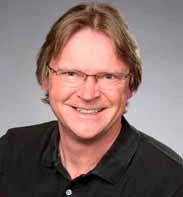
One of his clients was Nienstedt GmbH, a manufacturer of cutting tools and presses and moulds for frozen food processing, who in 2001, offered him permanent position. Michael stayed with Nienstedt for the next 11 years, eventually rising to Vice President in charge of international sales. Although it was a radical departure from academia and laser research, he gained skills and experience in company finance, international sales and managing people from diverse educational backgrounds, which would later prove invaluable for developing LIOP-TEC.
LIOP-TEC
Although he enjoyed his time at Nienstedt, Michael never forgot about his scientific background. One day in 2011, Michael and his wife went for a walk with Jürgen Lindener-Roenneke, a former PhD student of Michael’s. Jürgen had been working in the laser industry for several years, and to cut a long story short, they came up with the idea that Michael returns to the laser world and uses his knowledge of laser technology and his business skills to set up and develop their own company, LIOP-TEC. Jürgen already had a team in place with experience in both opto-mechanics and lasers and the idea was to use this ready-made source of expertise to provide researchers and the laser industry with innovative, high-performance products and solutions.
Partner for scientists and laser industry
Over the past 11 years, Michael, Jürgen and their team have built up LIOP-TEC into a partner of choice for scientists and the laser industry by developing a reputation for providing innovative state-of-the art solutions and products of superior performance.
They started with basically standard opto-mechanics and fine-thread screws for research institutions and the laser industry. Triggered by demands from the Helmholtz research centre in Dresden for large mirror mounts for high-power laser facilities, they immediately started designing and developing. This kind of mounts which are continuously developed further have since turned out to be an important part of LIOP-TEC’s product portfolio. A second milestone was the sale of their first laser, not so much because of the value of the sale, but because it confirmed the customers’ trust in LIOP-TEC.
The company now provides a range of high repetition dye lasers for applications including laser induced fluorescence (LIF); photolysis; combustion and atmospheric studies; LIDAR; and Raman spectroscopy. They also provide opto-mechanical products in the form of mirror mounts available as non-magnetic mounts and for beam steering in compressor chambers of ultrahigh power laser systems, as well as a range of fixing accessories.
With a strong distribution chain in Europe, China, Japan and India, Michael puts LIOP-TEC’s success down to the following factors:
Expertise and know-how to provide tailor-made solutions: LIOP-TEC’s expertise enables the company to understand its customers’ needs and to provide tailor made solutions for optomechanical products. This involves detailed discussions with the customer on materials and specifications in which LIOP-TEC can provide advise on how to amend or simplify a design to get the best results.
As an example, the company is currently working with a university on the development of an experimental chamber requiring parts made of titanium, a very difficult material to work with. Although the university had some ideas about the basic design of the of the chamber, they worked with LIOP-TEC to effect a number of changes and in the end, a successful combined solution was created.
Pride in quality and stability of their products: Rather than relying on external suppliers, LIOP-TEC builds most components from scratch. They do their own benches, drilling, milling and turning so they can take pride in being able to guarantee quality and mechanical stability. In this regard, “Made in Germany” is one of the company’s key selling points because as Michael points out, Germany is justifiably renowned for precision and stable mechanics owing to its unique educational and apprentice training system.
Collaboration and teamwork: Wherever necessary or appropriate, LIOP-TEC welcomes opportunities to team up with trusted companies or individual scientists to help develop products. An example is their collaboration with Niko Ernsting and his research group at Humboldt University who have developed a system for femtosecond fluorescence upconversion spectroscopy. Nico installs the system and does the testing and training while LIOP-TEC focuses on the opto-mechanical parts and the business side.
Ultra-high vacuum optical systems
A future growth area is ultra-high vacuum optical systems, particularly for surface coating applications and laser desorption. Although a number of problems still remain in this area, Michael is confident that LIOP-TEC will be able overcome all of the technological challenges.
A major problem with mirror mounts in ultra-high vacuum environments is the choice of materials to avoid outgassing. This depends on vacuum pressure. At 10-12 torrs, for example, brass is forbidden, and only aluminium and/or stainless steel can be used. Similarly, as there can be no grease, friction needs to be kept at a minimum and the system must also be completely free of holes in which gas can collect, otherwise it's very difficult to pump the system down. As all LIOP-TEC parts are made in-house, the selection of materials is not problematic.
A bigger challenge is with applications that require the laser to be steered inside the chamber. As the mirror mount screws cannot be adjusted manually inside a vacuum, they need to be remotely controlled. Fortunately, this problem is solved via a collaboration with the German company, Physik Instrumente (PI).
Another challenge with heavier ultra-high vacuum optical systems is the need for special bearings to support all the mechanics and the optics, such that the system is still stable and only requires a small force to turn the mirror mounts in all directions. While LIOP-TEC has a lot of experience in selecting appropriate bearings, some of which are manufactured by specialized companies according to LIOP-TEC’s specifications, a second more serious problem is how to put the optics in a frame and keep the mirror surface flat and stress-free to avoid any wavefront distortions. Michael is pleased to report that they have found a solution for this problem and applied for patents.
If you stated again, what would you do differently?
“When I set up my own research group as part of my Habilitation, I did it more or less all on my own and inevitably made some mistakes. If I did it again, I’d get in much closer touch with expert researchers who already have similar systems in place and shorten the learning curve”.
What advice do you have for the next generation of entrepreneurs?
“First, it’s not enough to be excited about what you are doing – you need to concentrate on sales and make your products and services known. You may have the best product in the world, but if nobody knows about it, nobody will buy it. It’s very important to talk to current and prospective customers to learn what they really want and how you can adapt your ideas to their needs”.
“Second, don't forget about finance. You need to know what a balance sheet is, how to work with financial figures and how to control your finances. You also need to learn about liquidity (cash-flow) and how to talk to banks. Even though these things are a long way from science, they are very important aspects and shouldn't be underestimated”.
Written by Jose Pozo, Director of Technology and Innovation at EPIC (European Photonics Industry Consortium).









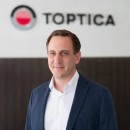
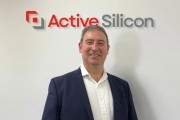
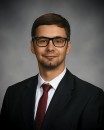

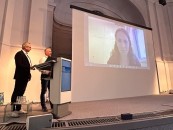
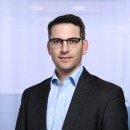
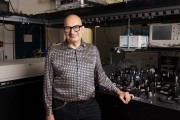
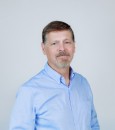

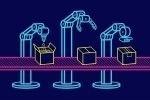
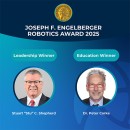
















 Back to Features
Back to Features